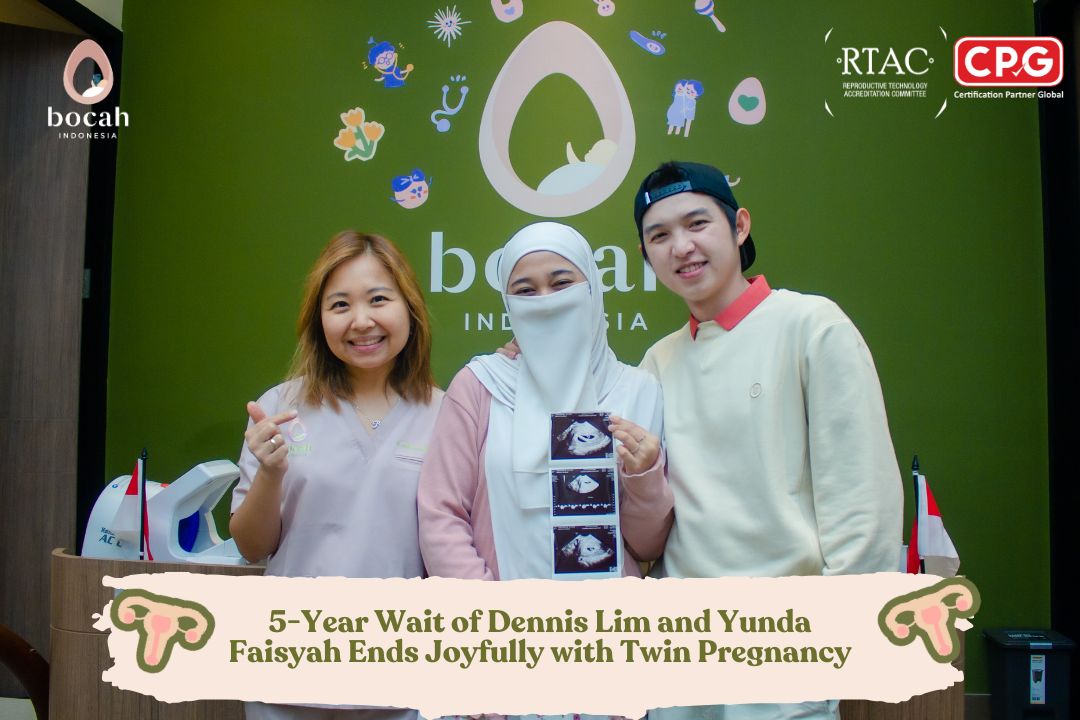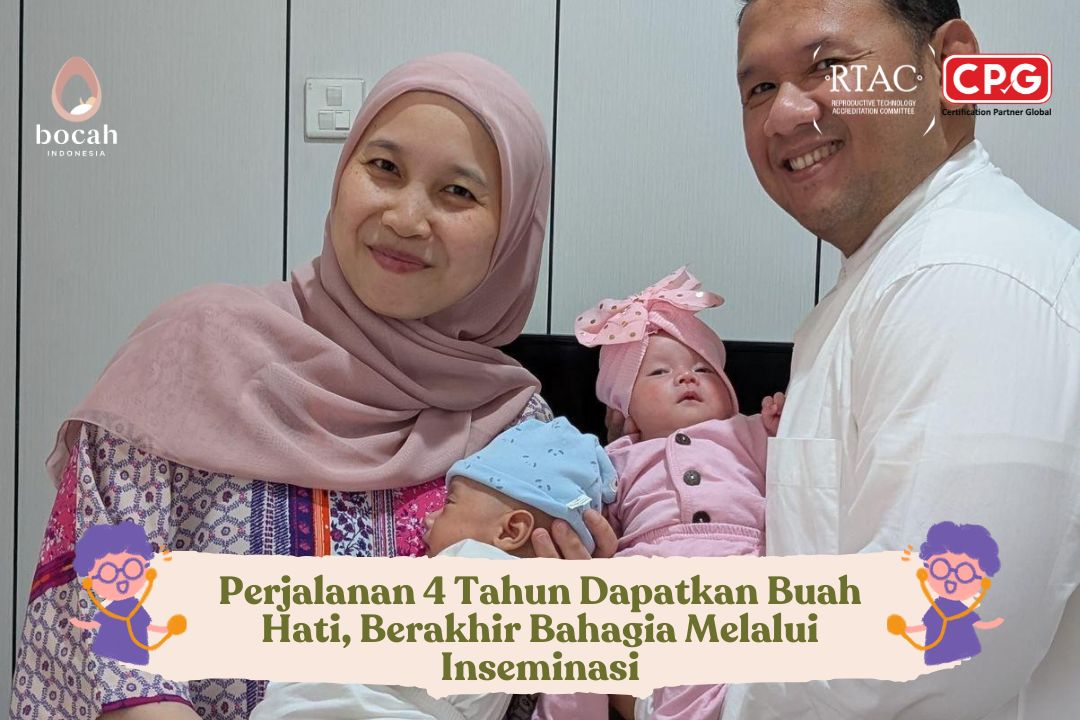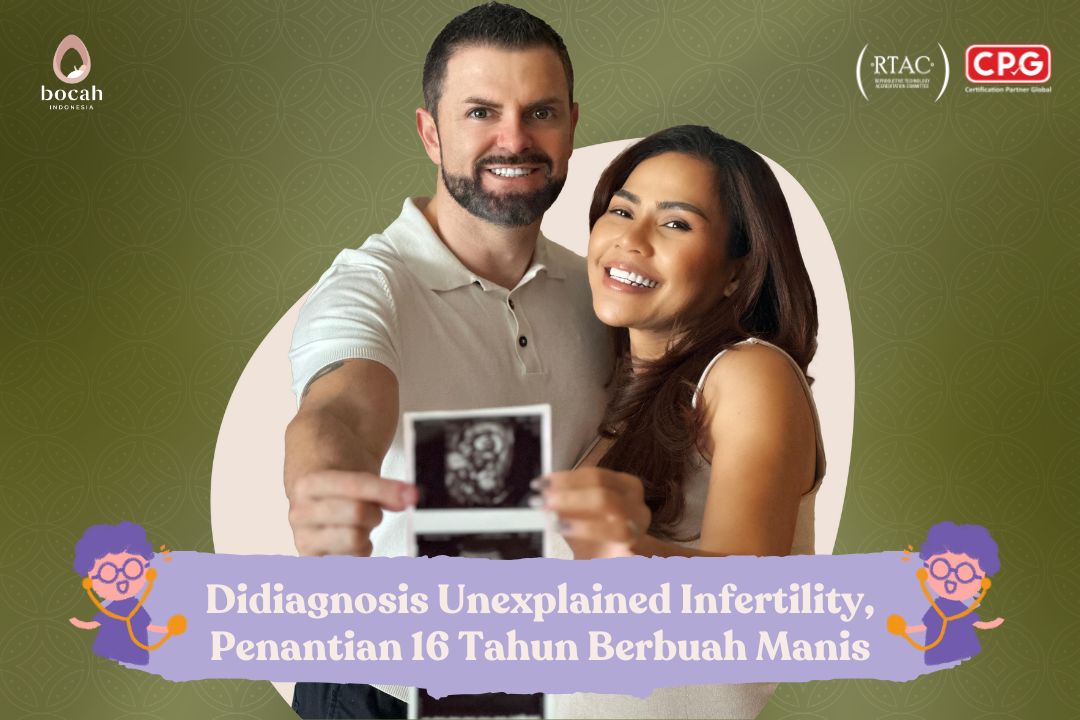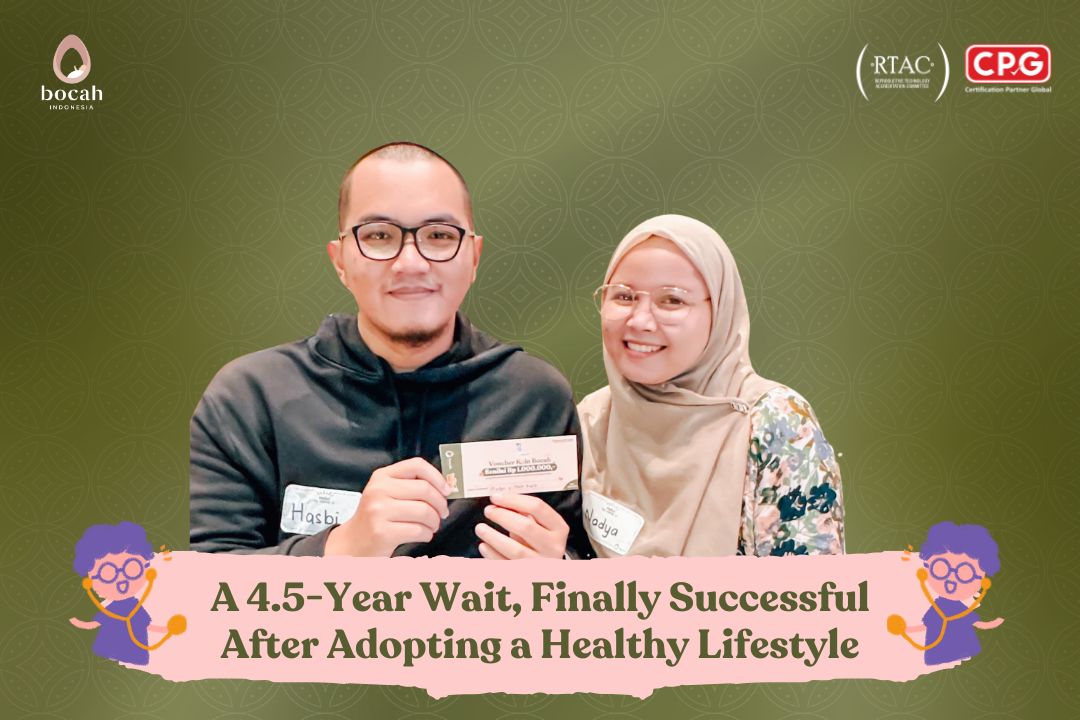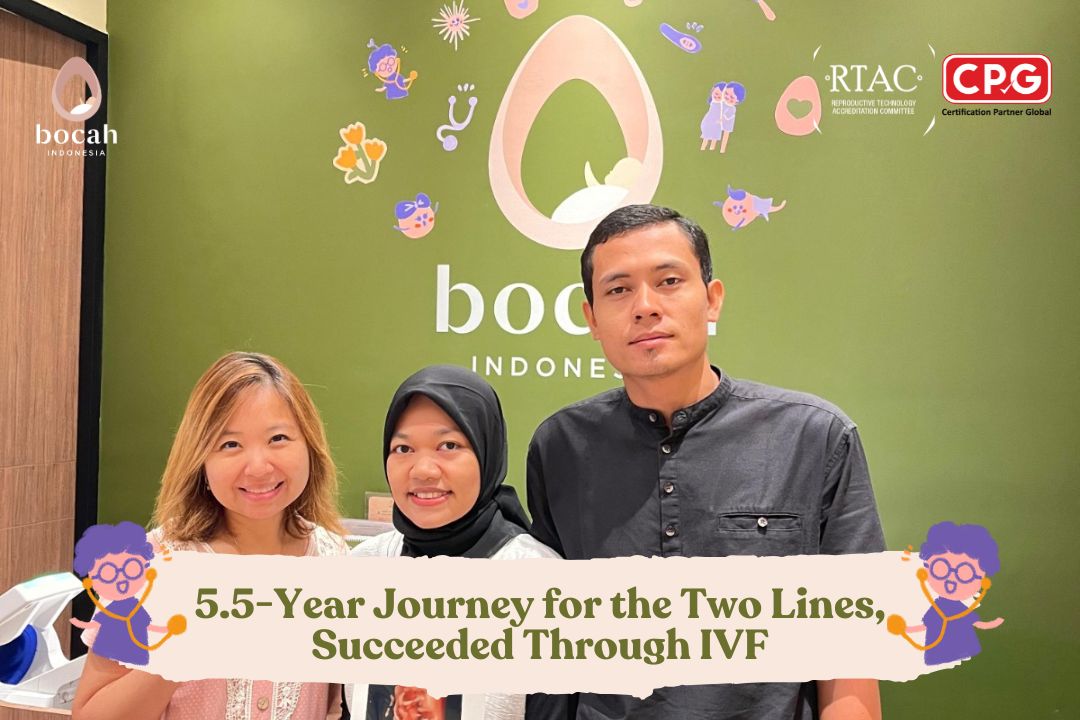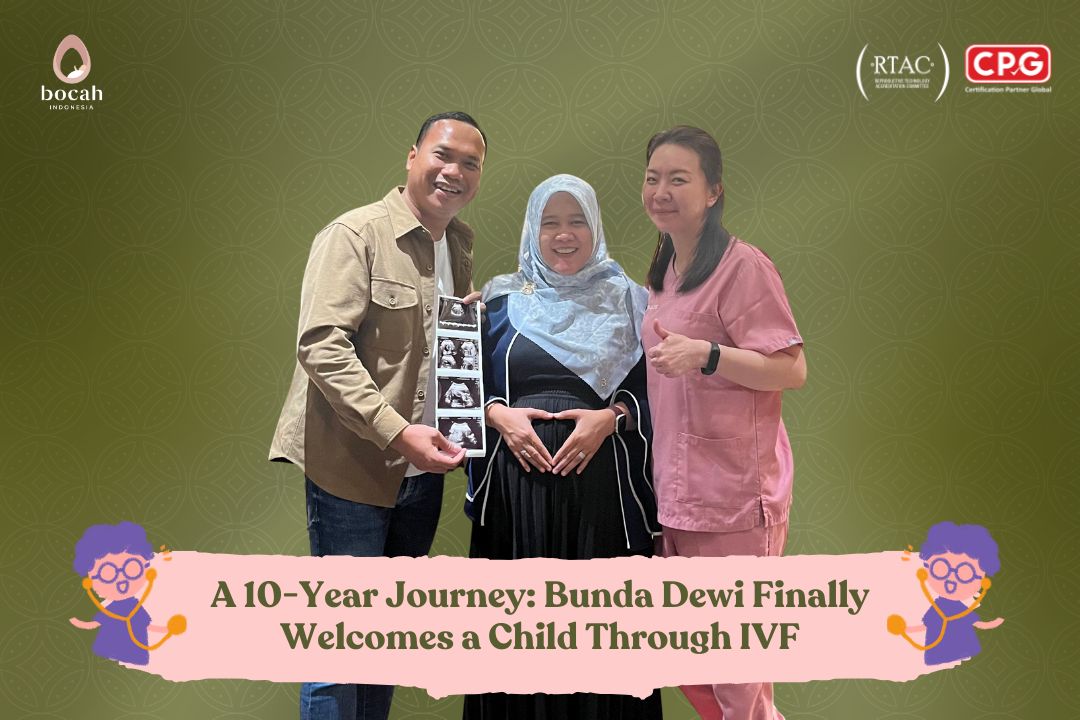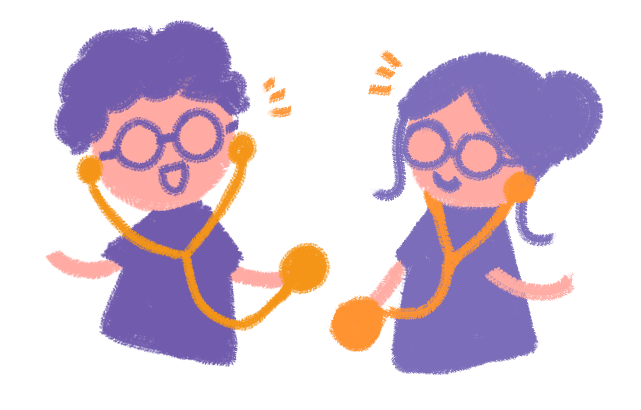A Four-Year Wait: Small Family Completed with the Birth of Twins
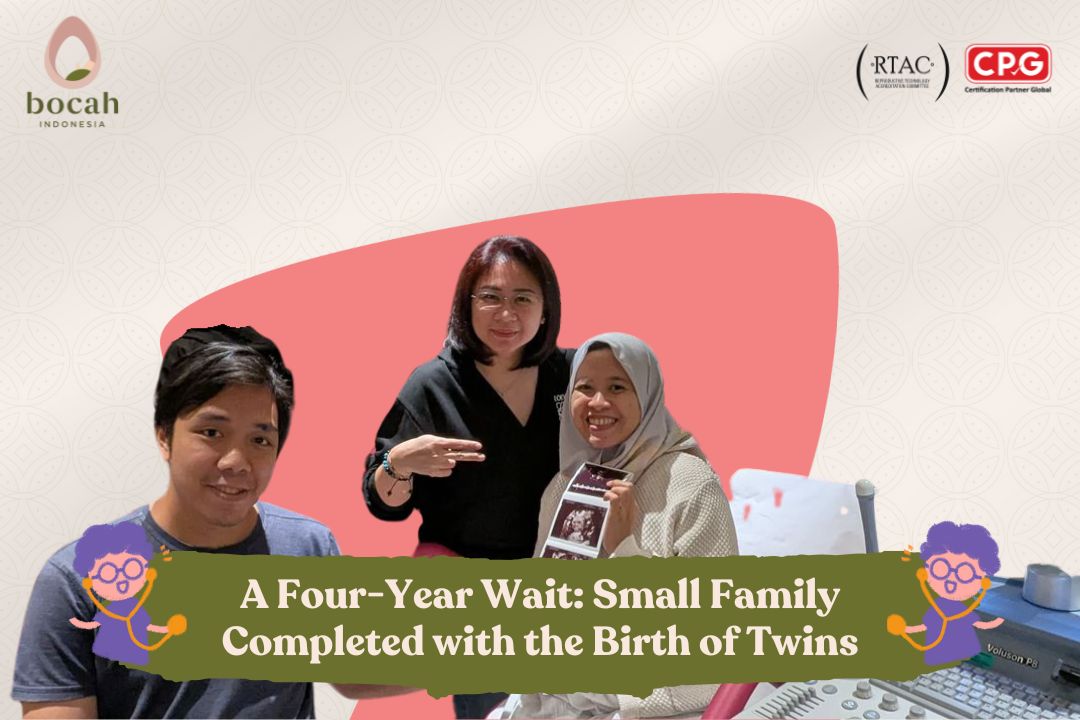
Are you yearning for a small family complete with children but still struggling with infertility? Don’t worry, a deeply moving story is shared by the couple Bunda Titih Rahma and her husband after waiting four years to conceive. Their journey to parenthood wasn’t easy. Bunda Titih had pursued various fertility programs, ranging from natural conception attempts, Intrauterine Insemination (IUI), acupuncture therapy, to undergoing a hysteroscopy procedure.
Eventually, Bunda Titih and her husband chose to proceed with a fertility program at Bocah Indonesia in 2022. However, this, too, was challenging, as Bunda Titih was diagnosed with uterine polyps and uterus hyper contraction. Meanwhile, her husband was diagnosed with oligospermia and asthenozoospermia.
What are Uterine Polyps and Uterus Hyper Contraction?
Uterine polyps are a condition involving the abnormal growth of tissue in the lining of the uterus (endometrium). Generally, uterine polyps are benign, but in some cases, this condition can develop into malignancy. This abnormal tissue growth can make it difficult for a woman to conceive, leading to infertility.
Uterus hyper contraction, or uterine hyperstimulation, is a condition where the uterus contracts too frequently. This condition can also hinder fertility as it interferes with the process of implantation of the fertilized egg by the sperm into the uterine wall.
The condition of uterus hyper contraction experienced by Bunda Titih was, in fact, only detected during the embryo transfer process.
Tanya Mincah tentang Promil?
What are Oligospermia and Asthenozoospermia?
As previously explained, Bunda Titih’s husband was diagnosed with oligospermia and asthenozoospermia.
- Oligospermia is the condition where the sperm cell count in the semen is very low.
- Asthenozoospermia is the condition where a portion of the sperm cells exhibits abnormal motility (movement). In this condition, sperm cells may be non-motile or move slower than normal.
Sperm motility and count play a vital role in successful fertilization. If a man experiences both conditions (known as Oligoasthenozoospermia), his fertility can be significantly impaired. However, this did not cause the couple to give up.
Bunda Titih was supported by dr. Cynthia Agnes Susanto, BMedSc, Sp.OG (Obstetrics and Gynecology Specialist) at Bocah Indonesia. Meanwhile, her husband was attended to by dr. Tiara Kirana, Sp.And (Andrology Specialist) at Bocah Indonesia. Both collaborated as the Bocah Indonesia fertility team to assist Bunda Titih and her husband in their dream of holding their beloved child.
Now, their long wait has resulted in the sweet outcome of twins, who complete their small family. Thanks to their effort and patience throughout the fertility program, their journey ended beautifully.


